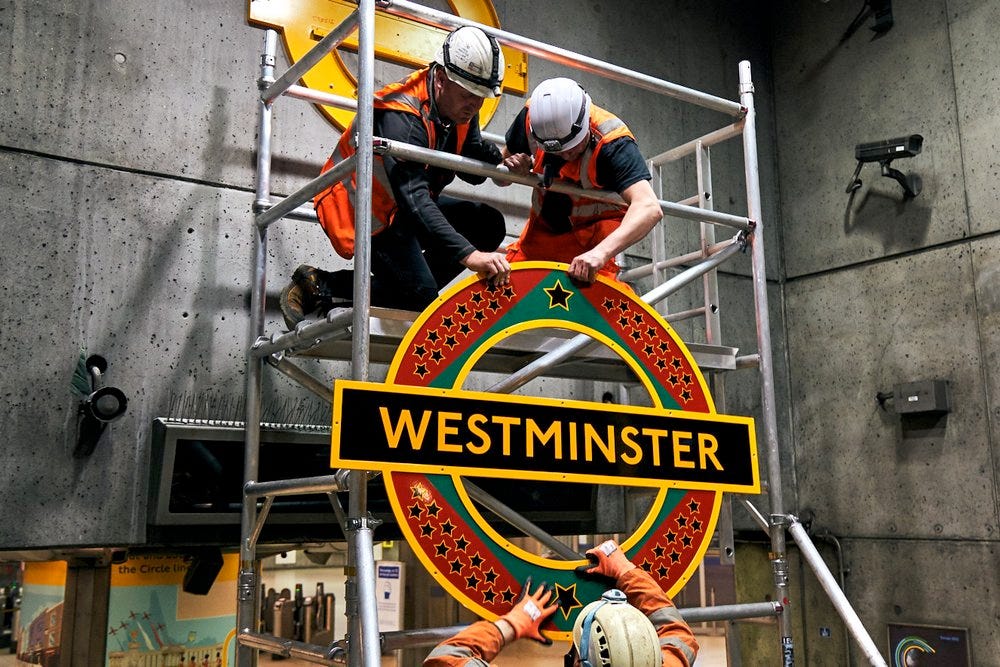Fifteenth #8: On Black creative expression
The transgressive power of Black techno-vernacular creativity
How the transgressive presence of Black creative expression in music, visual arts and technology expresses Black techno-vernacular creativity and gestures towards new creativity possibilities
📚 You can buy any book featured in this newsletter from my page on Bookshop.org
🇸🇪 From Tuesday 27th — Thursday 29 August, The Conference gathers in Malmö. I will be speaking on the second day as part of a session called “Rewilding Us”. My talk will explore my interests in technology, decolonial futures, more-than-human intelligence, and ecology. I’m calling it “Human Decentred Design”. Check out the full program
🏖️ I’m taking a break during August. My newsletter returns on 1 September. In the meantime, why not explore my archive?

Have you ever been to Westminster? If you enter its Tube station from Bridge Street next to Big Ben, take a moment to look up. In its concrete vestibule, you will notice the familiar London Underground roundel, albeit with some striking visual differences. Since 2022, this entrance has been transformed into a miniature gallery, courtesy of Larry Achiampoing and his Afrofuturist work, “PAN AFRICAN FLAG FOR THE RELIC TRAVELLERS’ ALLIANCE (UNION)”. Don’t feel bad if you are a frequent passenger and have never noticed this before. The sign is significantly above eye level.
This remixed London Underground roundel is a rare example of Black cultural expression in the British public realm. Pan-African colours of red, gold and green speak to the centuries-old entanglement binding Britain, Africa and the Caribbean — of blood, of gold and land. The roundel stares in defiance towards the Palace of Westminster. By re-deploying these Pan-African colours and re-creating this symbol of London, this artefact of Black cultural expression takes up space in London’s historic seat of imperial and administrative power.
Rules govern the boundaries of our technological creative imagination — the syntax or grammar rules for committing words to a page; the rhythmic signatures that define a musical genre; the brush strokes that signal affinity with an art movement.
I want to look beyond these constructed boundaries that hold back Black cultural expression. I want to examine these transgressive acts of experimentation and ponder how they can inspire similar transgressive acts of creativity.
When we ideate at the limits of a creative discipline, we will inevitably hesitate before our mental constraints pull us back from breaching its extremes. Sometimes, these conventions head off what we should or shouldn’t do before we try.
I want to understand what it means to use Black creative expression as a form of technological vernacular creativity.
Keep reading with a 7-day free trial
Subscribe to First & Fifteenth to keep reading this post and get 7 days of free access to the full post archives.



